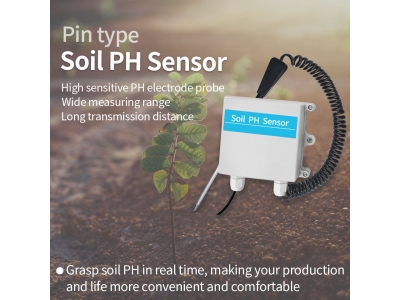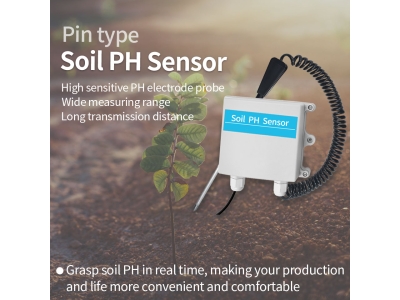Introduction Precision agriculture, also known as smart farming or precision farming, is a farming management concept that uses technology to optimize crop yield and quality while minimizing input costs such as water, fertilizer, and pesticides. One of the key technologies used in precision agriculture is soil sensor data, which provides valuable information about soil moisture, temperature, and nutrient levels. This data can be used to make informed decisions about irrigation, fertilization, and other aspects of crop management, leading to more efficient and sustainable farming practices.

Soil Sensor Technology Soil sensor technology has advanced significantly in recent years, making it easier and more affordable for farmers to collect and analyze soil data. There are several types of soil sensors available, including moisture sensors, temperature sensors, and nutrient sensors. These sensors can be installed directly in the soil or placed on the surface, and they can provide real-time data that can be accessed remotely through a computer or mobile device. Some sensors can even be integrated with other farm management systems, such as irrigation systems, to automate the delivery of water and nutrients based on the data collected.
Benefits of Soil Sensor Data The use of soil sensor data in precision agriculture offers a number of benefits for farmers, including:
Improved crop yield and quality: By monitoring soil moisture and nutrient levels, farmers can ensure that crops receive the right amount of water and nutrients at the right time, leading to healthier plants and higher yields.
Reduced input costs: By using soil sensor data to optimize irrigation and fertilization, farmers can reduce their use of water, fertilizer, and other inputs, saving money and reducing their environmental impact.
More efficient use of resources: Soil sensor data can help farmers identify areas of their fields that have different soil properties, allowing them to tailor their management practices to the specific needs of each area.
Enhanced environmental sustainability: By minimizing the use of water, fertilizer, and pesticides, precision agriculture can help to reduce the environmental impact of farming and promote more sustainable land management practices.
Case Studies There are numerous examples of how soil sensor data has been used to improve crop management in precision agriculture. One such example is a study conducted by researchers at the University of California, Davis, who used soil moisture sensors to optimize irrigation in almond orchards. By monitoring soil moisture levels and using the data to schedule irrigation, the researchers were able to reduce water use by 20% while maintaining or even increasing crop yields.
In another case study, a farmer in the Midwest used soil nutrient sensors to optimize fertilizer application in his corn fields. By monitoring soil nutrient levels and adjusting his fertilizer application rates accordingly, the farmer was able to reduce his fertilizer use by 15% while maintaining high yields and improving the overall health of his soil.
Challenges and Future Directions While soil sensor data has the potential to revolutionize crop management in precision agriculture, there are still some challenges that need to be addressed. One of the main challenges is the integration of soil sensor data with other farm management systems, such as irrigation and fertilization equipment. In some cases, farmers may also need support in interpreting the data and making informed decisions based on it.
Looking to the future, there are several exciting developments on the horizon for soil sensor technology in precision agriculture. For example, researchers are working on developing sensors that can provide even more detailed information about soil properties, such as pH levels and microbial activity. There is also ongoing research into the use of advanced data analytics and machine learning algorithms to analyze soil sensor data and provide actionable insights for farmers.
Conclusion Soil sensor data is a powerful tool that can help farmers make more informed decisions about crop management in precision agriculture. By providing real-time information about soil moisture, temperature, and nutrient levels, soil sensors can help farmers optimize their use of water, fertilizer, and other inputs, leading to improved crop yield and quality, reduced input costs, and enhanced environmental sustainability. While there are still challenges to be addressed, the future looks promising for the continued development and adoption of soil sensor technology in precision agriculture.






